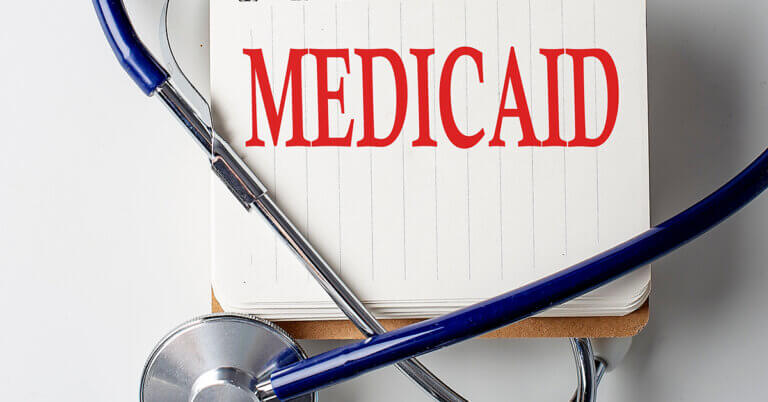March 19, 2024

Burda on Healthcare: The Numbers Don’t Add Up for Patient Safety
When we last used this column to visit the topic of patient safety, things were bleak. In “Dead Patient Walking,” we argued that patients are at risk before they even receive care from such things as supply chain shortages, poor EHR systems, cybersecurity attacks and prior authorization delays.
If a patient can make it through that deadly gauntlet, they might have a chance to get safe, effective care and enjoy an optimum clinical outcome courtesy of their patient care team.
Then again, after reading through some of the latest reports and research on patient safety, maybe not. Let me run through a few of them for you.
Lower Scores on CMS Patient Safety Measures
In February, the Centers for Medicare & Medicaid Services (CMS) released its annual National Impact Assessment of the CMS Quality Measures Report. The 72-page report tracks performance measures in CMS quality programs and tells you whether those measures got better, stayed the same or got worse compared with previous years. CMS then buckets those measures into 10 domains, including safety. In 2023, CMS tracked 492 unique measures in 26 quality programs.
Overall, 47% of all the measures got worse in 2021, which is the latest year CMS has performance data. Thirty-eight percent of them got worse in 2020. By comparison, only 12% got worse in the previous four-year period, 2016 through 2019.
CMS reported a similar pattern when looking only at safety measures. In 2023, CMS tracked 94 unique patient safety measures in 22 quality programs. Fifty-four percent of the safety measures got worse in 2021 compared with 48% in 2020 and only 8% in the previous four-year period.
CMS blamed the worsening patient safety performance on the COVID-19 pandemic. You can read about what I think of that in, “Let’s Stop Blaming the Pandemic for Adverse Patient Events.”
List of Health Tech That Can Hurt Patients Grows
 In January, ECRI released its annual list of the Top 10 Health Technology Hazards that put patients at risk.
In January, ECRI released its annual list of the Top 10 Health Technology Hazards that put patients at risk.
Now, this is different from ECRI’s latest Top 10 Patient Safety Concerns for 2024, which it released last week in honor of Patient Safety Awareness Week. Spoiler alert: Watch out for newly minted clinicians.
Back to the health hazards data: The 17-page report identified the biggest threats to patients from health technology based on a number of sources, including ECRI investigations into patient safety incidents, ECRI testing of medical devices and ECRI observations and assessments of hospital operations and practices.
Here’s this year’s list verbatim from ECRI:
- Medical devices may pose usability challenges for home users, risking misuse and patient harm.
- Inadequate or onerous device cleaning instructions endanger patients.
- Sterile drug compounding without the use of technological safeguards increases the risk of medication errors.
- Overlooked environmental impacts of patient care endanger public health.
- Insufficient governance of AI used in medical technologies risks inappropriate care decisions.
- Ransomware targeting the healthcare sector remains a critical threat.
- Increased burn risk with single-foil electrosurgical return electrodes.
- Infusion pump damage remains a medication safety concern.
- Poor QC (quality control) of implantable orthopedic products can lead to surgical delays and patient harm.
- Third-party web analytics software can compromise patient confidentiality.
I don’t know what most of this is, but I am going to clean my CPAP machine after I finish this column.
Two New Medication Error Hot Spots Appear
In January, the U.S. Agency for Healthcare Research and Quality (AHRQ) released its annual National Healthcare Quality and Disparities Report. It’s like CMS’ quality measure report but much bigger at 244 pages. AHRQ devoted most of the report to how the COVID-19 pandemic affected various segments of the healthcare delivery system. The AHRQ report has a separate Appendix B called Quality Trends and Disparities Tables, which includes a 114-page section specifically on patient safety.
The patient safety section highlighted the post-pandemic improvement, aka decline, in healthcare-associated infection rates. We wrote about that in this post, “Yes, Some Good Patient Safety News.” But the section also pointed out two growing areas of patient safety concern:
- The percentage of adults who reported that a home health provider asked to see all their prescription medications and over-the-counter medicines during their first visit decreases.
- The percentage of adults 65 or older who received at least one of 33 potentially inappropriate prescription medications for older adults increased.
Seems like easily avoided problems, so it’s curious why they’re happening. But they are, per the AHRQ report, and they’re something else we adults and soon-to-be Medicare beneficiaries have to worry about.
Diagnostic Errors Are Sending Patients to the ICU, Morgue
In January, JAMA Internal Medicine published a study that took a hard look at hospitalized patients who were sent to the intensive care unit (ICU), who died in the hospital or both. Eleven researchers, most of whom are affiliated with the University of California at San Francisco, conducted the study. The study pool was 2,428 patients admitted to 29 academic medical centers in 2019.
Five hundred and fifty patients, or 23%, suffered a diagnostic error, per the researchers, who reviewed the patients’ records retrospectively. Four hundred and thirty-six patients, or 18%, suffered a diagnostic mistake that caused temporary or permanent harm or death. Further, of the 1,863 patients who died, diagnostic errors were a contributing factor in 121, or 6.5%, of the cases.
“Diagnostic errors in hospitalized adults who died or were transferred to the ICU were common and associated with patient harm,” the researchers said. “Problems with choosing and interpreting tests and the processes involved with clinician assessment are high-priority areas for improvement efforts.”
High priority? How about the top priority?
PE Ownership Associated With Jump in Adverse Events
In December, the Journal of the American Medical Association published a study that looked at the rate of hospital-acquired conditions (HACs) at hospitals after they were acquired by private equity (PE) firms. HACs are adverse events that harm patients.
Three researchers from Harvard and the University of Chicago conducted the study. The study pool was about 700,000 Medicare inpatients hospitalized at 51 PE-owned hospitals and about 4.2 million Medicare inpatients hospitalized at 259 peer hospitals not owned by a PE firm. The researchers analyzed data from 2009 through 2019. The study period was three years before a PE acquisition through three years after a PE acquisition.
According to the study, Medicare beneficiaries treated at a PE-owned hospital suffered a 25.4% increase in HACs over the study period compared with beneficiaries treated at a non-PE peer hospital. Bumps in patient falls, central line-associated bloodstream infections and surgical site infections drove the jump in overall HACs at the newly acquired PE-owned hospitals.
“These findings heighten concerns about the implications of private equity on healthcare delivery,” the researchers concluded.
Maybe it’s time to make ownership a quality measure?
What Conclusions Do You Draw From the Reports?
I’m not sure what you think about where patient safety is headed after reading these five reports and research studies. I know what I think. Patient safety isn’t getting any better, and it’s likely getting worse.
Achieving zero harm is possible. Leaning on an overused analogy, there were no fatal passenger airline crashes in North America in 2023, according to International Air Transport Association, which declared last year the safest year on record for commercial aviation. That won’t happen in healthcare until each person working in healthcare is 100% committed to the cause. We’re nowhere near 100%, and I’m not sure we’ll ever be.
Do you want a zero chance of a medical mistake injuring or killing you? Stay healthy.
Thanks for reading.





